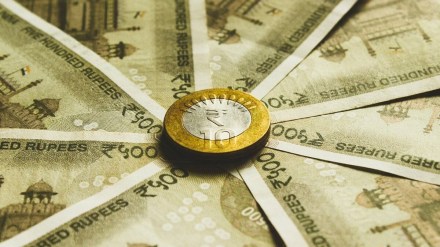The central public sector enterprises (CPSEs), key contributors to public capital expenditure, have drawn up plans to increase investments from their own resources by 24% on year to Rs 3.23 trillion in the next financial year, surpassing the pre-Covid year’s achievement of Rs 3.1 trillion in FY20.
The CPSEs’ investment increase next year would be led by the petroleum sector, which would invest Rs 1.06 trillion from its internal and extra-budgetary resources (IEBR) in FY24, compared with Rs 84,000 crore in FY23. Indian Oil Corporation would invest Rs 25,741 crore in FY24, up 83% on year. Oil and Natural Gas Corporation would continue its robust investment in exploration assets with capex of Rs 30,125 crore in FY24 compared with Rs 29,950 crore in FY23.
As per the plan, power sector CPSEs would invest Rs 60,805 crore in FY24 compared with Rs 52,878 crore in FY23. While NTPC would projected to invest Rs 22,454 crore in FY24 (similar to FY23), National Hydro Electric Power Corporation and Satluj Jal Vidyut Nigam would step up the gas on capex net year.
Also read: Govt may slash prices of chana offered to states
Among others, atomic energy CPSEs plan to invest Rs 13,059 crore in FY24 as against Rs 10,927 crore in FY23 from their IEBR resources.
On the other hand, the Centre’s budgetary support to departmental arms — the railways and the NHAI —skyrocketed in FY24 as it sought to step up capex to boost economic growth and job creation.
The railways and the NHAI, which together invested Rs 1.9 trillion from their IEBR resources, would invest just Rs 20,000 crore from IEBR in FY24. The Centre, which has halted fresh borrowings from the NHAI in FY23, almost halted fresh borrowings by railways in FY24 to insulate the poor finances of such entities, as their public service-oriented projects can’t generate sufficient revenues to service debt.
“The government funding means the cost of funds made available to department arms would be lower. Also, it would set a precedent for states to bring such off-budget liabilities incurred through their PSEs to the balance sheet,” NR Bhanumurthy, vice-chancellor of Bengaluru’s BASE University, said.
Also read: Unchanged stance: RBI keeps its options open
In fact, the investment from own resources by CPSEs and departmental arms together in FY24 would be at about Rs 3.5 trillion, almost at the level of FY23, despite the massive reduction in IEBR funding by railways and the National Highways Authority of India.
For the third year in a row, the government extended a massive budgetary capex support to the railways with Rs 2.4 trillion for FY24, up 50% on year, and accounted for one-fourth of the Centre’s Rs 10-trillion capex outlay for next year. For the NHAI, the budgetary capex support would be Rs 1.62 trillion in FY24, up from Rs 1.42 trillion in FY23 revised estimate and Rs 57,060 crore in FY22.
The NHAI doesn’t have its own sources of funds. It collects annually about Rs 14,000 crore through tolls and passes it on to the Consolidated Fund of India. The total borrowings of the NHAI rose to about Rs 3.5 trillion by March 31, 2022, from Rs 1.8 trillion as of March 31, 2019, forcing the Centre to stop fresh debt raising by the highway maker.
Despite the pandemic-induced impact, the public capex (Centre, states and CPSEs) is estimated to rise from 6.29% of GDP in the pre-pandemic FY20 to 6.45% in FY24.
The gross fixed capital formation (investment) to GDP ratio increased to 34.6% in Q2 FY23 from 33.4% in Q2 FY22, owing to a strong capital expenditure push by the Centre, state governments and CPSEs. The public capex (Centre, states and CPSEs) would increase by 57% in six years through FY24 to Rs 19.5 trillion as the Centre’s strong capex push aims to boost economic growth amid headwinds from the global slowdown and not-so-strong private capex.
The Centre’s budget for FY24 has made a record provision of capex — Rs 10 trillion for FY24 (compared with Rs 7.28 trillion in FY23), including Rs 1.3-trillion capex loans to states. Though states have not accelerated their capex on revenue concerns, they have kept their annual investments steady.
